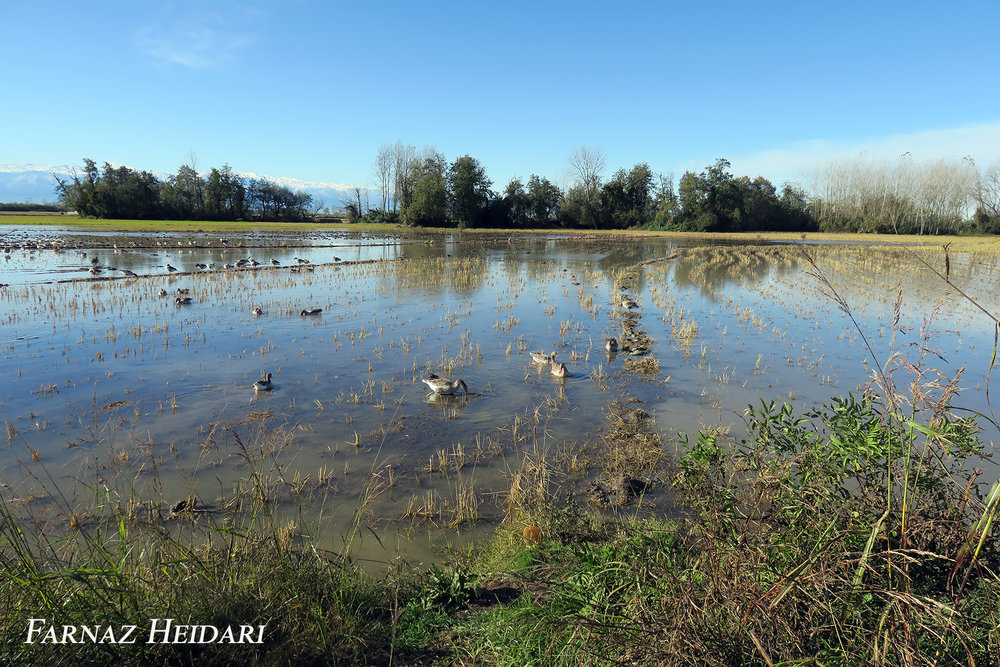A legacy of agricultural poisons

The potentially lethal impact of DDT on wildlife and especially birds of prey was first noted in the late 1950s. And now we know, spraying to control pests can head to poisoning of the environment and living creatures just like humans.
Scientists say DDT may still be taking toll on the environment. They are concerned with what they saw among wildlife populations. DDT seems widespread but the deputy head of Plant Protection Organization turned it down. "DDT poison has been taking off the consumption cycle for more than 2 decades," Yahya Ebtali pinpointed in August, 2015.
International studies also confirmed their negative effects. These poisons were accumulating the persistent pesticide and that animals eating them were being poisoned. Some raptors were also poisoned. And, all of these was concerned by what scientists saw among wild populations.
DDT, its breakdown products and other chlorinated hydrocarbon pesticides (and PCBs) posed more insidious threats. Because these poisons are persistent they tend to concentrate as they move through the food chains.
Dr. Sara DeLeon of Drexel university recently unearthed possible effects of PCBs on songs of black-capped chickadees (Poecile atricapillus) and song sparrows (Melospiza melodia) along a historical PCB gradient at the Hudson River in New York State.
"Measuring PCBs in protected and endangered species is challenging. In larger organisms they can be measured by taking blood or feathers/hair, without doing harm to the individual. This does not work in smaller organisms. Often individuals are sacrificed, or, in the case of birds, PCB levels are often measure in eggs. I think this a very real problem, and the complicated decisions made to address these problem areas often are unique to the situation," DeLeon concluded.

Under microscope
Chlorinated hydrocarbons accumulate in fatty tissues and, for example, when seabird feed on contaminated fish, most of the DDT from the fish ends up in a relatively few birds.
The head of the Food and Drug Agency Reference Lab, has pointed to unofficial reports that confirmed unauthorized use of DDT in some agricultural farms in Iran. Additionally, most Iranian environmentalists theorizes similar evidential matters and suggest intensive management.
These sources of poisoning may trigger health problems in users, which in turn may pass on to our children too.
And these changes can still be causing further problems that make young and susceptible people more prone. "Often in areas of high chemical concentrations, the synergistic effect of the chemicals is more problematic than their effects singly. In areas where this is a problem, scientists still struggle with how to determine which chemicals are causing the problems, and how to clean up the area", says DeLeon.
The hypothesis might partially explain an unusual fact: gulls, terns, cormorants, mergansers, herons and ospreys are among the highest endangered birds in this case. The accumulation of large concentrations of chlorinated hydrocarbons in birds does not usually kill them outright.
Rather, DDT and similar compounds, alter the bird's calcium metabolism in a way that results in thin eggshells, which crack during incubation. With little successful reproduction, bird populations plummeted.
This commentary raises the possibility that the effects of poisoning contributed to the rise in health problems such as cancers, and continues to contribute to the growing problem of ecosystem health.
No one suggests the legacy of toxic pesticides- if proven true by more study- would turn out to be the sole cause of the health problems such as cancers. But it would add an intriguing risk factor to those more commonly cited, such as raptors or even aquatic plants and planktons.

When can we eradicate DDT or other pesticides?
When pests are appeared in a country, normally a cry goes out to eradicate them. We ought to be careful about declaring eradication as a goal of any control program.
Recent studies showed that the population of insects in most Western Europe countries which have a reliable statistic data of insects' populations, have declined by 70 to 80 percent in the last 20 years. This number is shocking because the life of most plants and naturally different animal species is depending on them, directly or even indirectly. And, such a reduction is irreversible, as scientists say.
But why this happened? The main reason is removal of all individuals of a species by pesticides and other poisons that dealing with new pests of agricultural fields. Unfortunately, there is absolutely no data in countries such as Iran. So it is not easy to make apt decisions in the case of new agricultural poisons.
As mentioned before, a new scientific study that published in peer-reviewed journal PLOS One has found that, in German nature reserves, flying insect populations have declined by more than 75 percent over 3 decades. It means one of the most successful eradication programs have been applied in Western Europe. Scientists who did this study, have been addressed to the results and said, "Loss of insect diversity and abundance is expected to provoke cascading effects on food webs and to jeopardize ecosystem services."
Resources:
http://hamshahrionline.ir/details/302464/City/-Iranenvironment
http://www.irna.ir/fa/News/81707478
The book of Ecological World View, Charles Krebs, CSIRO publishing, 2008
https://www.theguardian.com/environment/2017/oct/18/warning-of-ecological-armageddon-after-dramatic-plunge-in-insect-numbers
